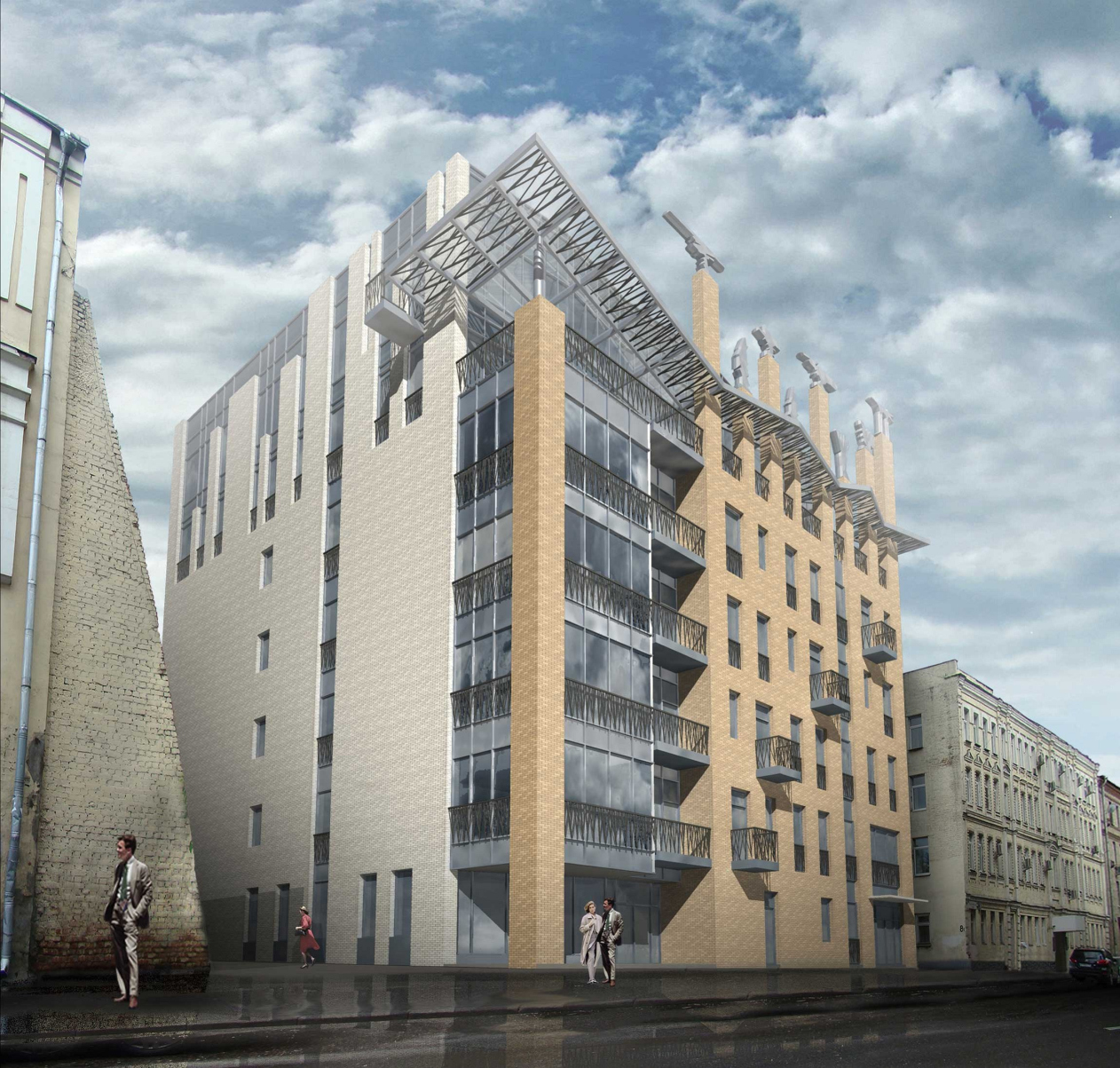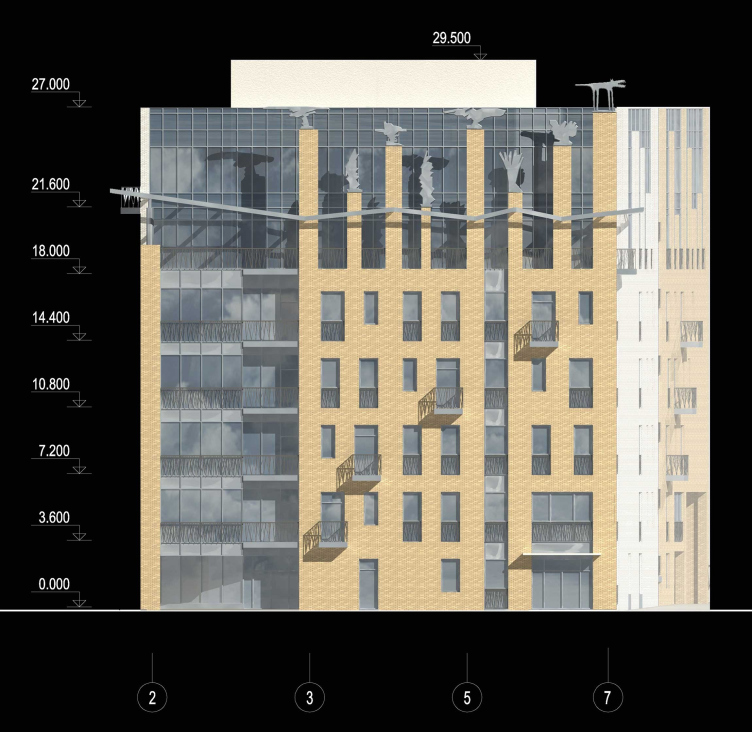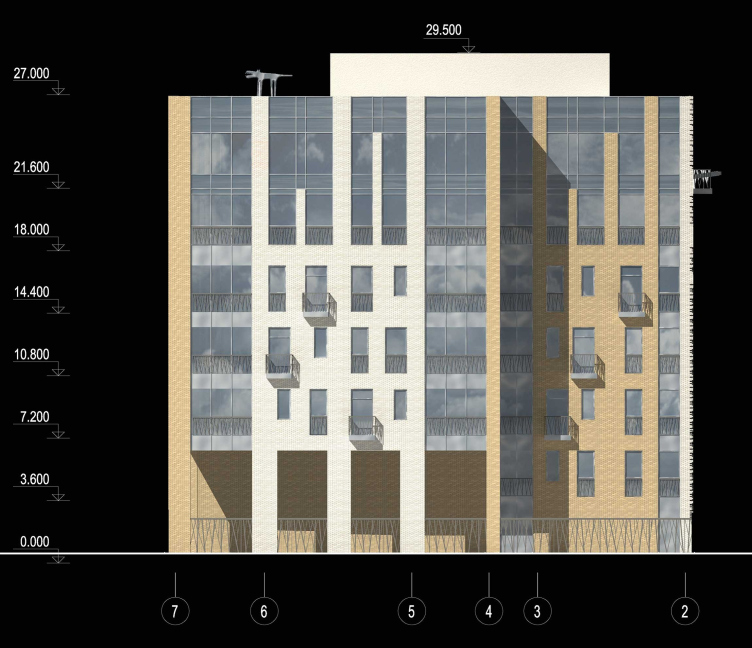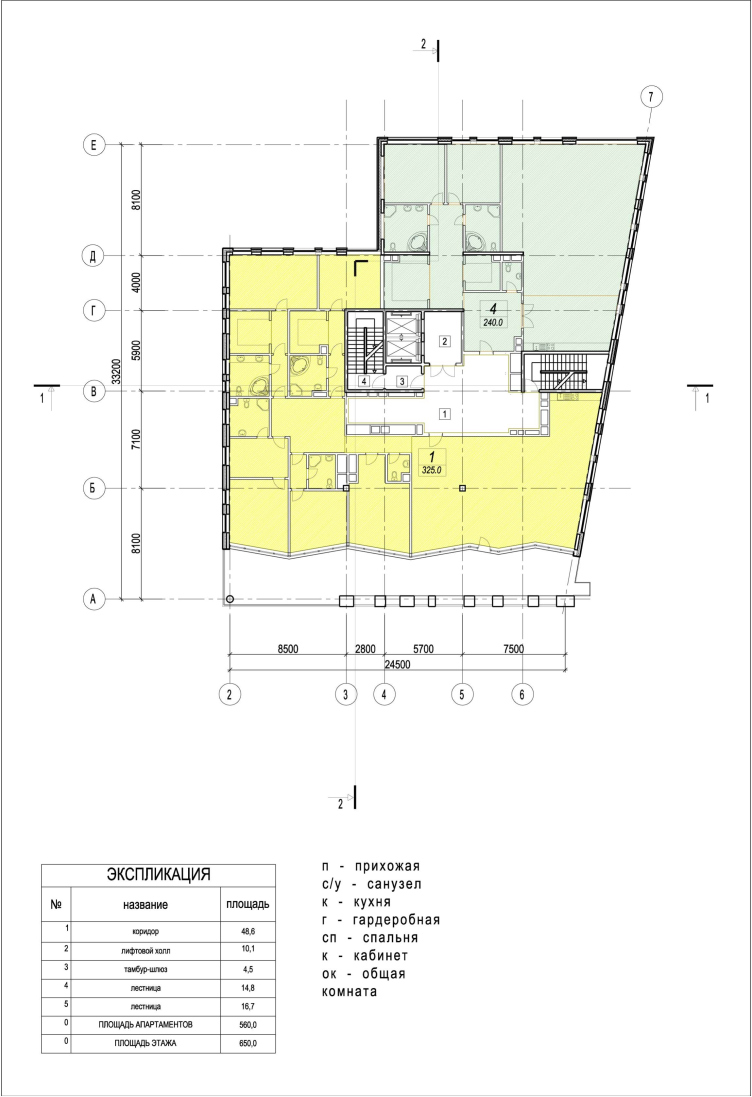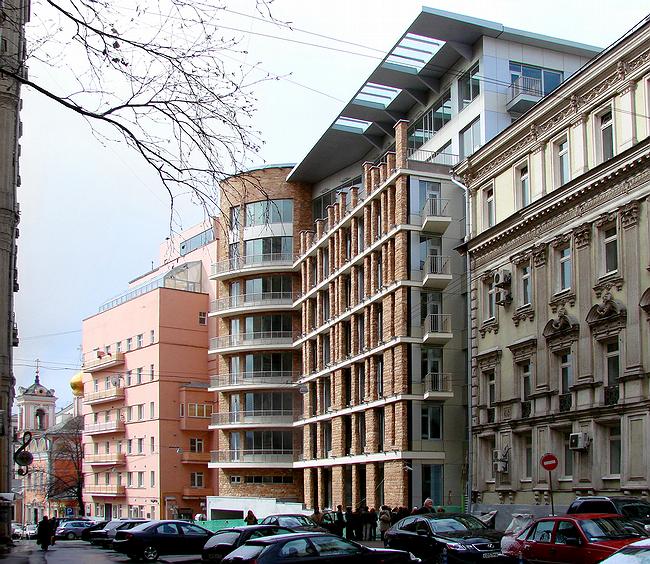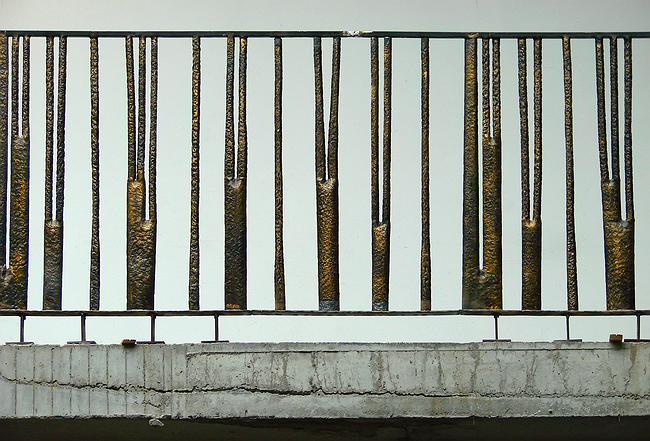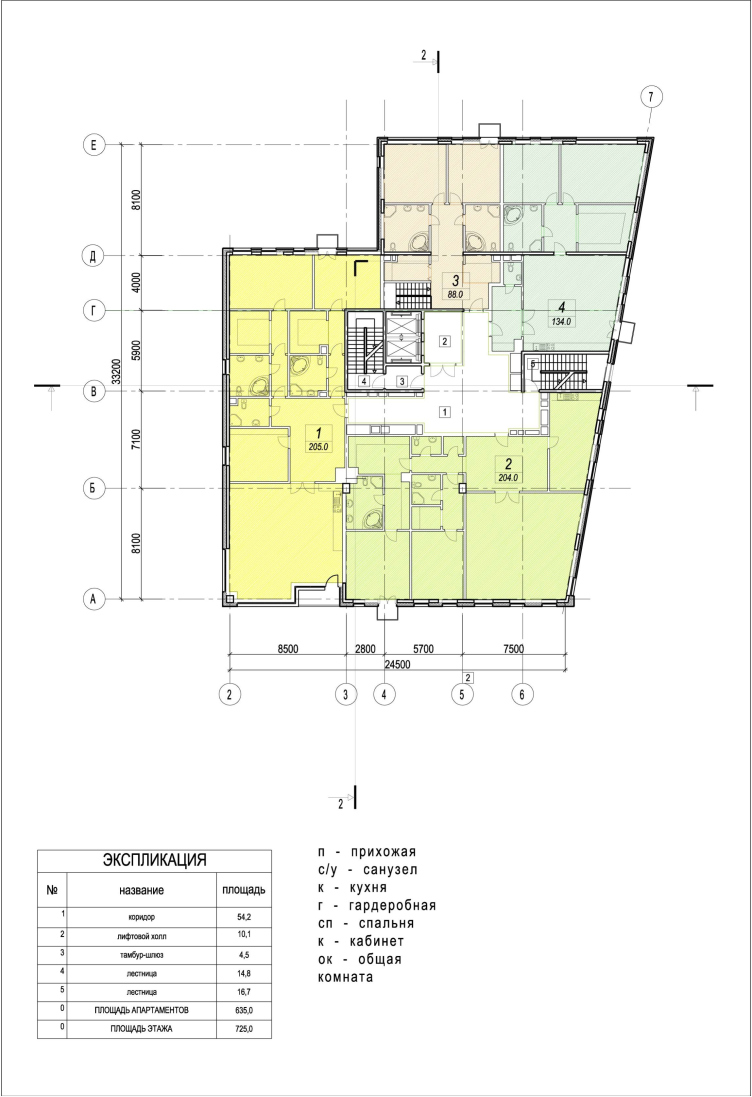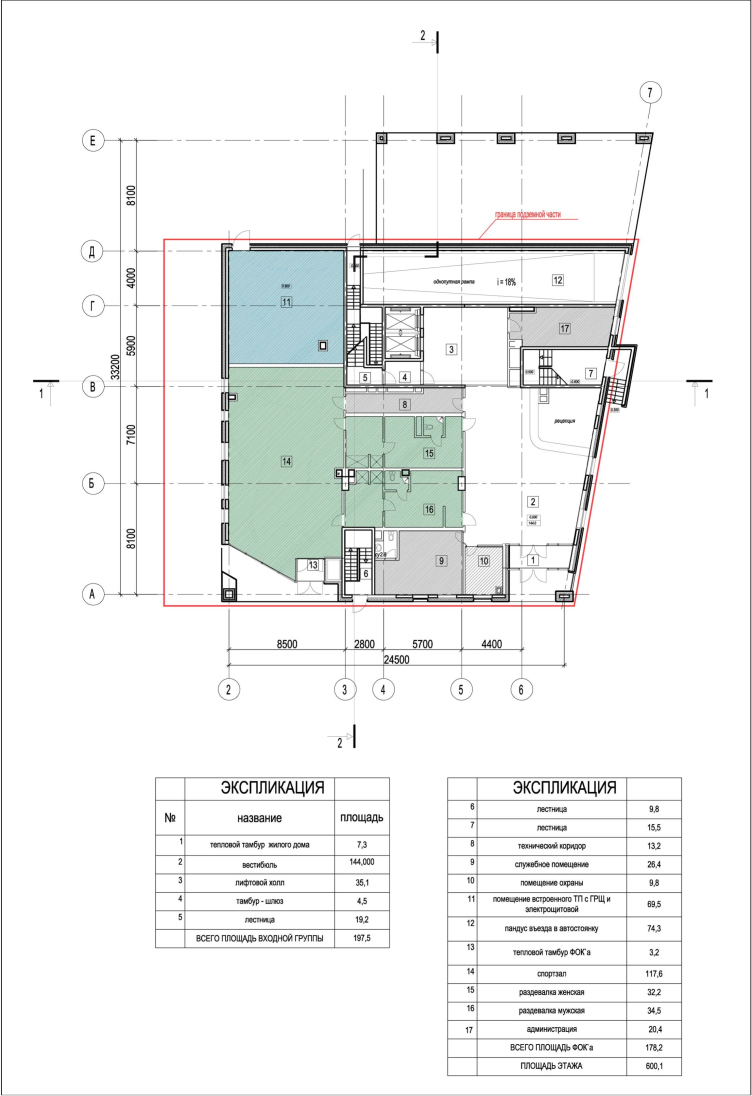House in the Elektrichesky Lane, 201. View form the Elektrichesky Lane
Copyright: © Aleksey Bavykin and Partners
The house in the Elektrichesky Lane, 2010. West facade (the main one)
Copyright: © Aleksey Bavykin and Partners
The house in the Elektrichesky Lane, 2010. The east facade
Copyright: © Aleksey Bavykin and Partners

